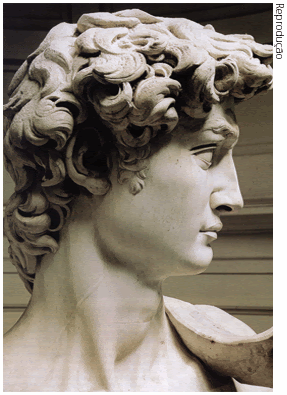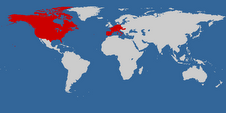
Born in Mar del Plata, Argentina, on March 11.th 1921 to immigrant Italian parents Vicente Piazzolla and Asunta Manetti, Ástor Pantaleón Piazzolla – "El Gran Ástor" (The Great Astor) – spent most of his childhood with his family in New York City, where he was exposed to both jazz and the music of J.S. Bach at an early age. While there, he acquired fluency in four languages – Spanish, English, French, and Italian – and began to play the bandoneón after his father, nostalgic for his homeland, spotted one in a New York pawn shop.
At the age of 13, he met Carlos Gardel – another paramount, legendary figure of Argentine tango – who invited the young prodigy to join him on his current tour. Much to his dismay, Piazzolla's father deemed that he was too young to go along. This early disappointment proved a blessing in disguise, as it was on this tour that Gardel and his entire band perished in a plane crash.
He returned to Argentina in 1937, and the pianist Arthur Rubinstein (then living in Buenos Aires) advised him to study with the Argentine composer Alberto Ginastera. Delving into scores of Igor Stravinsky, Béla Bartók, Maurice Ravel, and others, he rose early each morning to hear the Teatro Colón orchestra rehearse while continuing a gruelling performing schedule in the tango clubs at night.
Upon introducing his new approach to the tango (nuevo tango), he became a controversial figure among Argentines both musically and politically. The Argentine saying "in Argentina everything may change – except the tango" suggests some of the resistance he found in his native land. However, his music gained acceptance in Europe and North America, and his reworking of the tango was embraced by some liberal segments of Argentine society, who were pushing for political changes in parallel to his musical revolution.
During the period of Argentine military dictatorship from 1976 to 1983, Piazzolla lived in Italy, but returned many times to Argentina. In 1990 he suffered thrombosis in Paris, and died two years later in Buenos Aires on July 4.th 1992.
The use of the passacaglia technique of a circulating bass line and harmonic sequence, invented and much used in 17.th and 18.th century baroque music but also central to the idea of jazz "changes", predominates in most of Piazzolla's mature compositions. Another clear reference to the baroque is the often complex and virtuosic counterpoint that sometimes follows strict fugal behaviour but more often simply allows each performer in the group to assert his voice.
With the composition of "Adiós Nonino" in 1959, Piazzolla established a standard structural pattern for his compositions. In 1965 an album was released containing collaborations between Piazzolla and Jorge Luis Borges where Borges's poetry was narrated over very avant-garde music by Piazzolla including the use of dodecaphonic rows, free non-melodic improvisation on all instruments, and modal harmonies and scales. In 1968 Piazzolla wrote and produced an operita-tango, "María de Buenos Aires" that employed a larger ensemble including flute, percussion, multiple strings and three vocalists, and juxtaposed movements in Piazzolla's own style with several pastiche numbers ranging from waltz and hurdy-gurdy to a piano/narrator bar-room scene straight out of Casablanca.

Recently staged in Lisbon at São Carlos National Opera Theatre featured by the wondrous singer Mízia
Pieces that exemplify a new direction in his music include "Libertango" and most of the "Suite Troileana". In the 1980s Piazzolla was rich enough, for the first time, to become relatively autonomous artistically, and wrote some of his most ambitious multi-movement works. These included "Tango Suite", "Histoire du Tango", and "La Camorra", a suite in three ten minute movements, inspired by the Neapolitan crime family.
In his musical professionalism and open-minded attitude to existing styles he held the mindset of an 18.th century composing performer such as Handel or Mozart, who were anxious to assimilate all national "flavours" of their day into their own compositions, and who always wrote with both first-hand performing experience and a sense of direct social relationship with their audiences. This may have resulted in a backlash amongst conservative tango aficionados in Argentina, but in the rest of the West it was the key to his extremely sympathetic reception among both classical and jazz musicians, both seeing some of the best aspects of their musical practices reflected in his work.
His numerous compositions include orchestral work such as the "Concierto para Bandoneón, Orquesta, Cuerdas y Percusión", "Doble-Concierto para Bandoneón y Guitarra", "Tres Tangos Sinfónicos" and "Concierto de Nácar para Nueve Tanguistas y Orquesta", pieces for the solo classical guitar – the "Cinco Piezas", as well as song-form compositions that still today are well-known by the general public in his country, like "Balada para un loco" (Ballad for a madman) and "Adiós Nonino" dedicated to his father, which he recorded many times with different musicians and ensembles. Biographers estimate that Ástor Piazzolla wrote around 3,000 pieces and recorded around 500.
¡Esta es una muy generosa colaboración de Wikipedia con RIC!
In his musical professionalism and open-minded attitude to existing styles he held the mindset of an 18.th century composing performer such as Handel or Mozart, who were anxious to assimilate all national "flavours" of their day into their own compositions, and who always wrote with both first-hand performing experience and a sense of direct social relationship with their audiences. This may have resulted in a backlash amongst conservative tango aficionados in Argentina, but in the rest of the West it was the key to his extremely sympathetic reception among both classical and jazz musicians, both seeing some of the best aspects of their musical practices reflected in his work.
His numerous compositions include orchestral work such as the "Concierto para Bandoneón, Orquesta, Cuerdas y Percusión", "Doble-Concierto para Bandoneón y Guitarra", "Tres Tangos Sinfónicos" and "Concierto de Nácar para Nueve Tanguistas y Orquesta", pieces for the solo classical guitar – the "Cinco Piezas", as well as song-form compositions that still today are well-known by the general public in his country, like "Balada para un loco" (Ballad for a madman) and "Adiós Nonino" dedicated to his father, which he recorded many times with different musicians and ensembles. Biographers estimate that Ástor Piazzolla wrote around 3,000 pieces and recorded around 500.
¡Esta es una muy generosa colaboración de Wikipedia con RIC!




















14 comentários:
Ástor Piazzolla é um senhor!
Tiro o meu chapéu.
Olá Tongzhi!
Ah ainda bem, caríssimo Imperador! Muito me apraz que assim faças! Por acaso, ao som de música dele já tirei mais do que o chapéu... Bem, mas isso agora não interessa nada!... Rsrs!
Um excelente sábado para ti! :-)
Pois é, Ric, isso de teres tirado "mais do que o chapéu", são "outros quinhentos"... já vamos em 1000!!!!
lololololol
... São já provavelmente bem mais de 1000... Podes crer, podes crer!
Rsrsrs!!!
Um grande músico que também tocava com a alma. Um daqueles que já me fez "perder" um bom tempinho no You Tube à procura dos seus vídeos.
Um belo post sem dúvida.
Um abraço e já agora o P. é de Paulo.
Olá Special K/Paulo!
Sinto-me bem melhor assim, podendo tratar alguém por um nome humano (Bem bonito, por sinal) em vez de uma «coisa» que só me remete para... cereais! Obrigado! :-)
Piazzolla para mim é único, no sentido em que não tenho como realacioná-lo ou ligá-lo a outros compositores contemporâneos. Além disso, bastam apenas alguns acordes para despertar em mim ideias e fantasias sobre Buenos Aires, Argentina, o mundo meio canalha do tango... Enfim, a imaginação leva sempre a melhor...
Espero que as horas no YouTube tenham valido a pena! Estou a pensar fazer o mesmo... Vale muito a pena, de certeza!
Muito obrigado, meu caro Paulo!
Para ti, um excelente domingo!
Um abraço! :-)
(Já agora, o Ric é óbvio!...)
Podes crer que valeram mesmo a pena. O Special K é roubado de uma música dos Placebo, só depois é que me lembrei dos cereais. Apesar dos meus pseudónimos na blogosfera gosto muito do meu nome e apesar de não o usar não o escondo de ninguém.
O tango combinado com o "acordeon" têm em Piazolla, talvez o expoente máximo.
Abraço.
... Ainda bem que gostas do teu nome: é o pretexto que me faltava para mudar a marca dos cereais para um nome de gente, no «blogroll».
Obrigado por me confirmares o interesse de ir ao YouTube ver e ouvir Piazzolla! É que vou mesmo! Tenho saudades de alguns temas que já não ouço há um bom tempo! De alguns só me vou lembrar quando ler os títulos...
Abraço, meu caro! :-)
(Um conselho: Não venhas para a beira-rio com a t-shirt. Podemos cruzar caminhos, e eu...) Rsrsrs!
Olá João C.!
Não tenhas dúvidas! É mesmo coisa única! Não tem paralelo!
Abraço! :-)
Obrigado para the Portuguese first lesson.
Em+a=na is very similar to Italian right?
I will revise my first lesson with vigour.
I hope you have a great Sunday there in Lisboa.
Abraco meu amigo.
??? teu amigo na Nova Zelandia
Kevin
Olá Kevin!
1. «Não tens de quê!» (= You don't have anything to thank for)
2. «Obrigado pela primeira lição de Português!»
(por + a = pela)
Yes, you're right, it's quite similar to Italian, though we have a lot less contractions. Our system is easier, with a lot less exceptions too.
I'll do my best as far as my Sunday is concerned.
Um abraço para ti também!
Do teu amigo em Portugal
Ric
:-)
Adoro este homem!
E como eu gosto de dançar ao som do Libertango!...
Olá João M.!
É fabulosa a música dele! Há que tempos que eu andava para escrever sobre ele!... Acho que há meses! Mas não tinha tido disponibilidade para «investigar» como gosto e como quero. Finalmente!
Ah sois dançarino de músicas portenhas? Bravo! «Eres tanguero! Que guapo!...» :-)
Abraço! :-)
Enviar um comentário